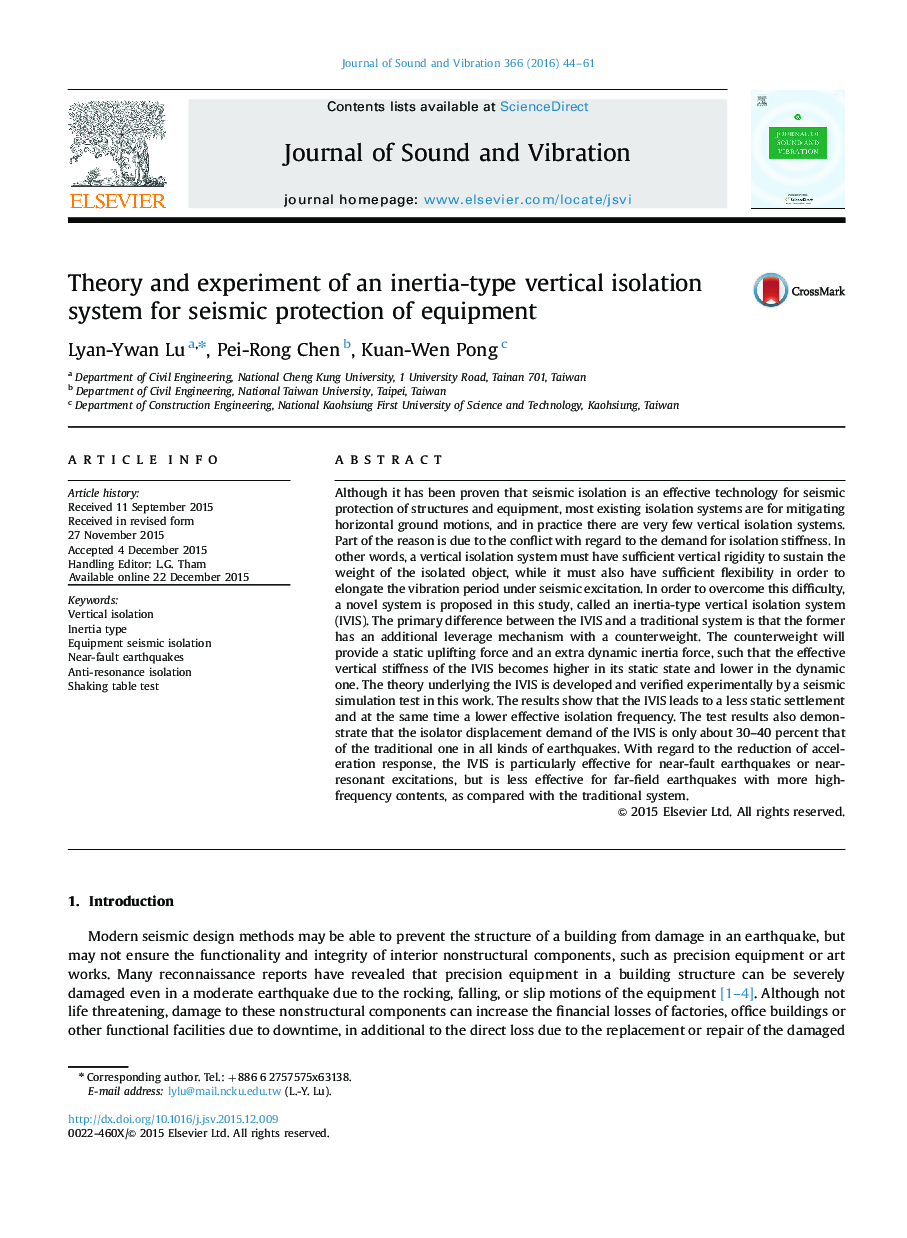| کد مقاله | کد نشریه | سال انتشار | مقاله انگلیسی | نسخه تمام متن |
|---|---|---|---|---|
| 287081 | 509534 | 2016 | 18 صفحه PDF | دانلود رایگان |
Although it has been proven that seismic isolation is an effective technology for seismic protection of structures and equipment, most existing isolation systems are for mitigating horizontal ground motions, and in practice there are very few vertical isolation systems. Part of the reason is due to the conflict with regard to the demand for isolation stiffness. In other words, a vertical isolation system must have sufficient vertical rigidity to sustain the weight of the isolated object, while it must also have sufficient flexibility in order to elongate the vibration period under seismic excitation. In order to overcome this difficulty, a novel system is proposed in this study, called an inertia-type vertical isolation system (IVIS). The primary difference between the IVIS and a traditional system is that the former has an additional leverage mechanism with a counterweight. The counterweight will provide a static uplifting force and an extra dynamic inertia force, such that the effective vertical stiffness of the IVIS becomes higher in its static state and lower in the dynamic one. The theory underlying the IVIS is developed and verified experimentally by a seismic simulation test in this work. The results show that the IVIS leads to a less static settlement and at the same time a lower effective isolation frequency. The test results also demonstrate that the isolator displacement demand of the IVIS is only about 30–40 percent that of the traditional one in all kinds of earthquakes. With regard to the reduction of acceleration response, the IVIS is particularly effective for near-fault earthquakes or near-resonant excitations, but is less effective for far-field earthquakes with more high-frequency contents, as compared with the traditional system.
Journal: Journal of Sound and Vibration - Volume 366, 31 March 2016, Pages 44–61
